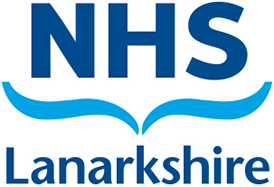Lumbar
On this page
- Where to Begin Video
- What Is Low Back Pain +/- Leg Symptoms
- Reasons For Low Back Pain +/- Leg Symptoms
- What Are The Symptoms?
- How Common Is Condition Low Back Pain +/- Leg Symptoms?
- Do I Need An X-Ray Or MRI?
- What Can Help With The Condition
- Exercise
- When To Speak To A Health Professional
- Help And Support
- Printable Version
Additional Information
- Pain Relief
- What do I do if my symptoms flare up?
- Mental Well Being
- Active Health Programme
- Acute Injury Management
- Staying in work and returning to work
- Smoking
- Chronic Pain
- Weight Management
- Other Treatments
Related pages
Where to Begin?
Low Back Pain With or Without Leg Symptoms Explained and How Best to Manage It
Information about Low Back Pain
Printable information is available here.
What Is Low Back Pain (With Or Without Leg Symptoms)
Low back pain is soreness or stiffness in the back, between the bottom of your ribs and the top of your legs. Most back problems start for no obvious reason.

Your lower back (also known as the Lumbar Spine) is made up of 5 vertebrae that protect the spinal cord. They have discs in between to act as shock absorbers when you are walking, running or jumping.
Your lower back moves at the facet joints. You have strong muscles and ligaments around your back that help supports these joints. These all help make your lower back one of the strongest parts of your body. Nerves come out between these joints to supply your legs with sensation (Feeling) and muscle power (For movement).

You may also feel pain and/or pins and needles/ numbness down one or both legs. This could mean that the nerve/s have been irritated (you may have heard this being called a ‘trapped nerve’).
Reasons For Low Back Pain With or Without Leg Symptoms
It is important to realise there is no one risk factor for low back pain with or without leg symptoms. It is can be caused by many different reasons and the Biological, Psychological and Social Model (or Biopsychosocial model for short) shown below is proven to be best for helping us to understand the cause and help with the management of the condition.
Low back pain with or without leg symptoms may be related to genetics (what you inherit from your parents), lifestyle, accidents, smoking or stress. Lifestyle issues may include lack of exercise, being overweight, poor nutrition (not eating a balanced diet) and when you do something that overworks the back too hard, too quickly. The spine is strong and mobile and thankfully back problems are rarely due to anything serious
Biological Factors
- Genetics
- Lack of exercise
- Smoking
- Diet
- Joints/ Ligaments/ Tendons
- Muscles/ Bones/ Discs
Psychological Factors
- Stress
- Anxiety
- Fear of movement
- Past experiences of pain
- Sleep
- Muscles/ Bones/ Discs
- Depression
Social Factors
- Work-related stresses
- Poor employer relationship
- Poor Family relationships
- Social isolation
What Are The Symptoms?
Mechanical Pain - Can also be known as non-specific low back pain
- It is often difficult to put back pain down to one single reason – many things can cause it. Mechanical pain may come from the moving parts of your back (facet joints/ muscles/ ligaments) or the discs but equally it may be described as non-specific which means that we don’t know what is causing the pain.
- Facet joint pain can be similar to a stiff, arthritic finger or knee joint that doesn’t move as well as it used to especially first thing in the morning.
- You need strong muscles to control the movement of the spine and sometimes our muscles are not doing their job properly which can result in pain. Your back is designed to be able to lift and carry loads and is also very flexible. It loves movement!! It does not like to be kept still for long periods of time.
- A strain of the muscles/joints can cause muscle spasm that can travel into your buttock ( bottom) and legs.
- Sometimes the disc can become a little irritated and can bulge or spread a bit – that’s just what discs do and they generally settle with time.
- Fear of movement, previous experiences of pain, stress, anxiety and depression can cause back pain.
- Work-related stresses, poor relationships with family, friends and employers can also cause back pain.
Common symptoms:
- Dull ache with or without a sharp pain
- Can come on slowly or with sudden movements
- Usually gets worse in certain positions or with certain movements
- The pain often varies in intensity – sometimes it’s worse than at other times
- The Stiffness/ discomfort is worse for up to 30 minutes in the morning
Nerve Pain
Nerves help you feel and nerves help you move. The picture below is a guide to show you where the nerves from the lower back provide feeling to the legs. Nerves are like branches in a tree- each nerve supplies a different area of your leg as you can see from the different coloured sections in the picture. Nerves can be irritated by a number of different reasons which can then cause pain spreading down your leg. 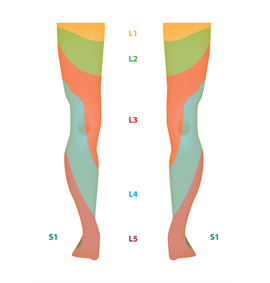
- Discs can bulge and irritate the nerve (Sometimes this is called a slipped disc but is important to understand that discs DO NOT SLIP). As a normal part of ageing, discs can bulge without causing any symptoms. If the disc bulge touches a nerve then it can irritate the nerves resulting in nerve symptoms such as pain or discomfort Other factors that can irritate the nerve include inflammation within the nerve, stenosis (narrowing of structures in your spine) to name a few.
- There are two main types of nerves. Nerves which help you feel (sensory nerves) and nerves which help you move (motor nerves). Both of these can be annoyed or irritated.
- This nerve pain can be very distressing and can last for a considerable period of time but generally does start to get better within 3 -4 months. This is a good indication that things are “turning a corner”.
- Other factors that can irritate the nerve include inflammation within the nerve and stenosis (narrowing of structures in your spine) to name a few.
Common symptoms:
- Sharp/electric/burning/shooting/stabbing pain which can travel to your foot/ toes.
- Leg pain often worse than back pain (sometimes no back pain).
- Weakness in the leg/s.
Chronic Pain
Although back and leg pain can get better completely, for some people, it can become a long term issue which can be managed. We call this chronic pain if it has lasted longer than three months. It is worth noting however that leg symptoms can last up to 2 years and still improve.
- Sometimes pain is no longer due to something that’s wrong with the parts of our our back but more related to the fact we are more sensitive to stimuli such as pain and discomfort and our central nervous system (our brain and some nerves) are ‘switched on’ to this pain
- A good way of describing it is that the volume knob on our pain system has been left turned up like a radio stuck on ‘loud’. You can learn to manage this and more information is contained here (link) on the chronic pain website.
Common symptoms:
- The pain can come on gradually or with sudden movements
- Dull ache or a sharp pain
- You will usually only feel the pain in the lower back region and into the buttocks although some people have pain right across their back
- The pain often varies in intensity
Visit our NHS Lanarkshire Chronic Pain page for more information.
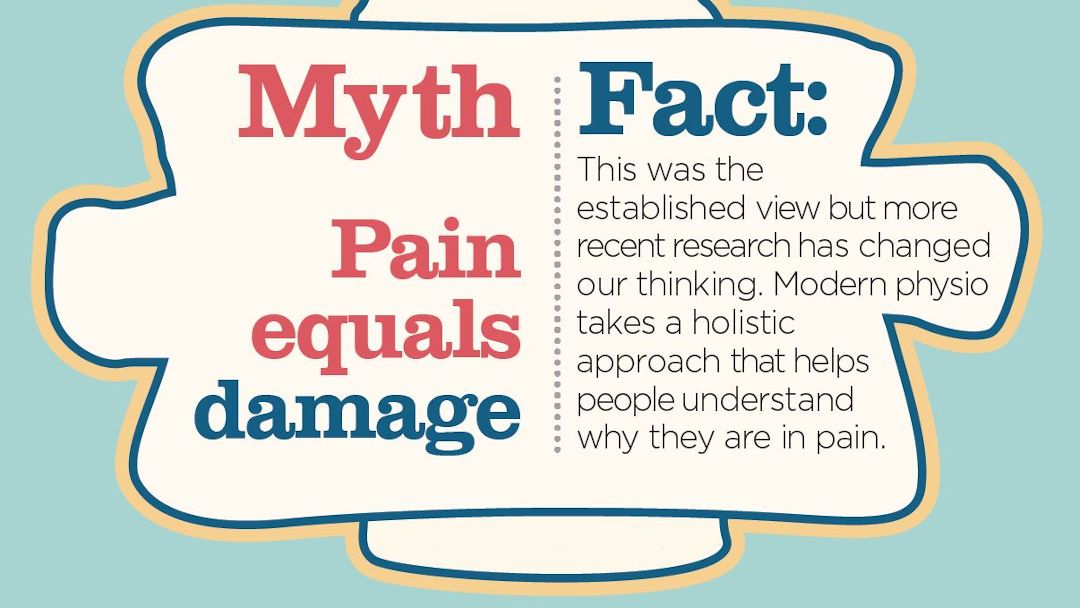
How common is Low Back Pain (With or Without Leg Symptoms)
Up to 80% of the population will experience back pain and a smaller number of people (5-10%) will experience symptoms that travel down one or both legs. Once it gets better a large number of people will have a flare up but the good news is that 80-90% of people who have low back pain will get better within 3 months.
Do I Need An X-Ray Or MRI?
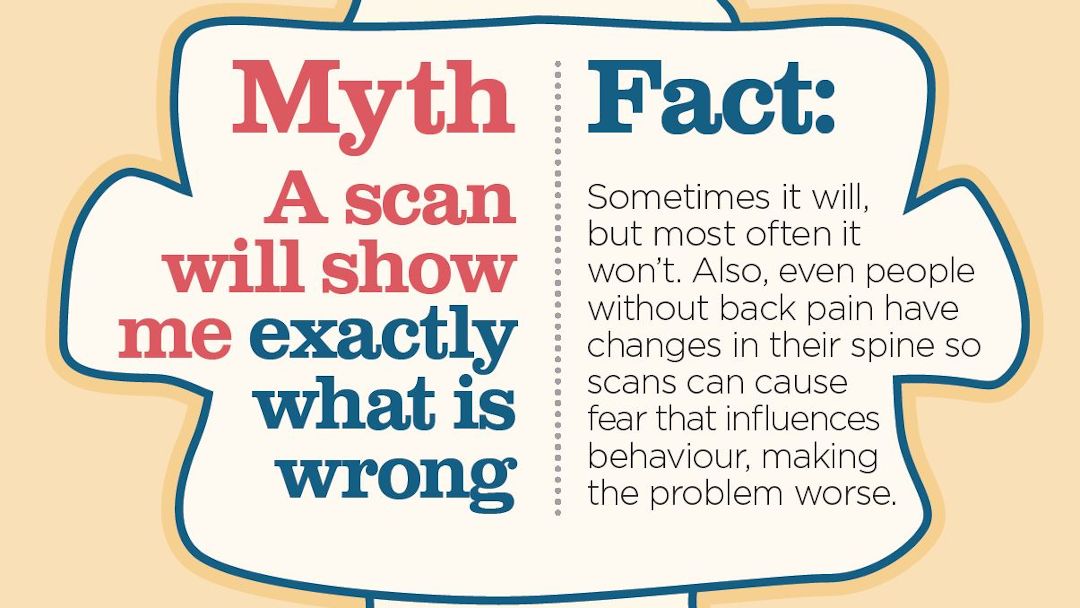
- X-Rays
A lumbar spine (lower back) x-ray gives you a radiation dose which is the same amount of radiation as 40 chest x-rays. This can be harmful and only gives us information about the bones and joints. For this reason, you will normally only be referred for an x-ray after an accident where you fall from above head height or for a few other very specific reasons, such as osteoporosis. - MRI
A Magnetic Resonance Scan (MRI) can help us take a closer look at your spine. There is a referral procedure for Spinal MRI scans within NHS Lanarkshire.
MRI scans are not used to give us a diagnosis, they are used to confirm what we think might be wrong with your back after you have been assessed. The scan shows soft tissues including the muscles and discs and this helps the medical team to decide whether your treatment should be changed (particularly if surgery is being considered).
People often worry about what will show up on an MRI and these feelings can make it harder to cope with pain. If you take a look at the table below which shows the MRI scan results of 3,110 patients without back pain who had MRI scans it shows us the normal age-related changes that we can expect in our spines. This is similar to seeing grey hair and wrinkles in the mirror as we get older!
| Age | 20 | 30 | 40 | 50 | 60 | 70 | 80 |
|---|---|---|---|---|---|---|---|
| Disc Degeneration (Ageing of the Spine) | 37% | 52% | 68% | 80% | 88% | 93% | 96% |
| Disc Bulge (Middle of the Disc Bulges Out) | 30% | 40% | 50% | 60% | 69% | 77% | 84% |
So we can all have these spinal changes and they will not prevent us from leading a normal life: Fantastic News!!!
Summary:
MRI scans are used to confirm a suspected diagnosis and to help guide treatment, mainly if surgery is being considered.
What Can Help With The Condition
What Do Health Professionals Do?
- As a GP
I can assess you, prescribe medication for your pain as required & refer you onto Physiotherapy or Leisure services where appropriate. - As a Physiotherapist
I can assess & treat low back pain. I mainly provide exercise-based treatments & advice on pain management. I may also consider manual treatments. I can also help identify rare and serious problems & ensure that they are managed in the correct way.
Helpful Tips – Condition Specific
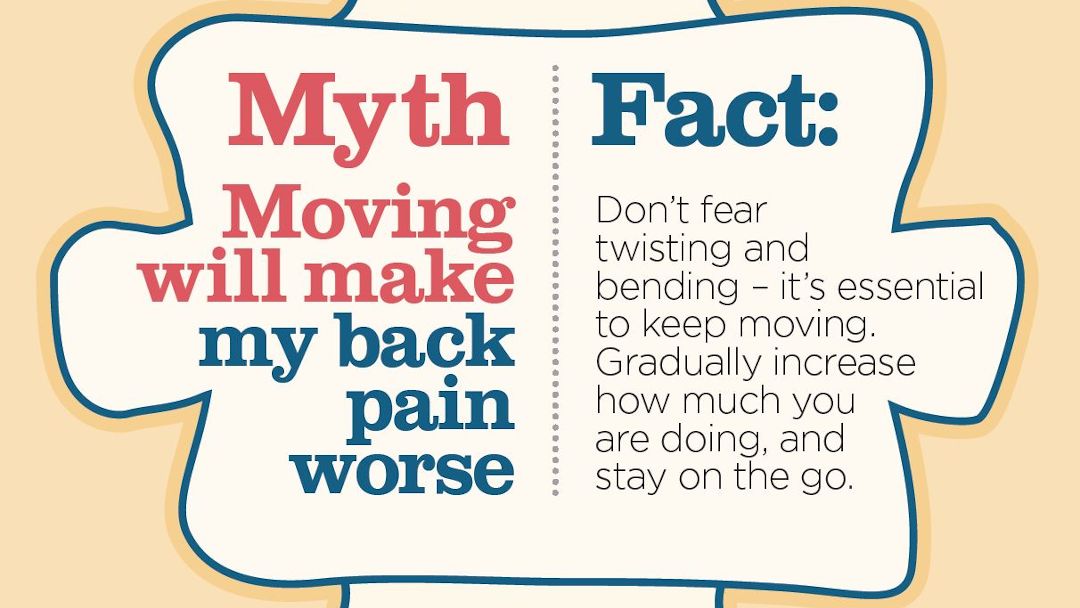
Everyone’s back pain is different and there isn’t one single treatment that works for every person. The treatment and advice that you get from your GP or physiotherapist will be based on the best evidence for your condition and will be tailored to you. Very painful, sudden back pain (we call this an ‘acute episode’) usually gets better within 6 weeks. You can help speed this up by doing exercises and movements that are designed to help your back. Remember – there’s no one exercise that is better than the other for low back pain.
If you have back pain, it is recommended that you:
Take the correct medication that your GP has prescribed
- Get information to help you understand your condition and how to manage it (By reading this you will have that better understanding!)
- Carry on working or return to work as soon as possible. You might find it’s better to have some time off work at the beginning, especially if you have a manual job, but it’s very important for you to return to work as soon as is possible.
- Return to your normal activities as soon as possible
- Exercise regularly by choosing an exercise that you enjoy and that is meaningful to you. The exercise that you do should fit your specific needs, preferences and capabilities. Whatever exercise you choose it is important to start slowly and gradually build up your levels of exercise over time.
- Use strategies to look after your mental health & wellbeing
- Look after your Diet, make sure that you stay at a healthy weight and stop smoking. You can get help with all of these things here.
- Smoking cessation
What about posture?
There is no one posture that is best. If you stay in one position for too long you can become sore and uncomfortable. So the best advice is to keep moving regularly. If your work involves sitting or standing in the same position for long periods of time please break up the day with regular breaks approximately every 20-30 minutes. If your job involves a lot of lifting this rarely causes problems. We know that there is a slight increase in the risk of developing back pain if you lift things weighing over 25kg per day. A certain amount of lifting can be good for our discs and muscles making them stronger
Timescales/ Prognosis
If this is your first onset of low back pain it can last up to around 6 weeks. If you have chronic pain then this can be present for a long period of time. With nerve symptoms, this often starts to settle after 3-4 months but can take up to 2 years
Exercise
Exercises designed to improve the movement and strength of your back can be very helpful. It is important to note it can take 6 – 8 weeks of doing specific exercises to notice a difference in your back and leg symptoms. It can take a further couple of months before you feel better. Local NHS Lanarkshire physiotherapists have recorded exercise videos that will get your rehabilitation started and will help you to manage your back with or without leg symptoms. The exercises are divided into early, middle and late stages. Your physiotherapist will help guide you. You should start doing the early exercises first and should find them easy before you progress to the middle and late exercises.
- Video 1: Early Movement
- Video 2: Early Movement
- Video 3: Early Movement
- Video 4: Middle Movement
- Video 5: Middle Movement
- Video 6: Middle Strengthening
- Video 7: Late Strengthening
- Video 8: Late Strengthening
When To Speak To A Health Professional
Less than 1% have back pain that needs urgent medical attention so you are most likely in the 99%.
Many people have a combination of back pain, leg pain, leg numbness and weakness. These symptoms can be distressing for you but don’t require emergency medical attention. There is a rare, but serious condition, called Cauda Equina Syndrome that does need to be seen by an emergency spinal team.
If you have developed any of the following signs and symptoms that have recently started along with your back/leg pain, phone 111 or attend your local A&E service as soon as possible:
Cauda Equina Syndrome Warning Signs
- Loss of feeling/pins and needles between your inner thighs or genitals
- Numbness in or around your back passage of buttocks
- Altered feeling when using toilet paper to wipe yourself
- Increasing difficulty when you try to urinate
- Increasing difficulty controlling your flow of urine
- Leaking urine or recent need to use pads
- Not knowing when your bladder is either full or empty
- Inability to stop a bowel movement or leaking
- Change inability to achieve an erection or ejaculate
- Loss of sensation in genitals during sexual intercourse
If you have recently started to experience any of the following along with your back pain, speak to your GP as soon as possible:
- Feeling unwell
- Pain after a fall or trauma from an accident
- Unexplained weight loss in the last 6 months
- Pain that started when you were ill with another medical condition such as cancer
- Unsteadiness when you walk
Help And Support
If after following the above advice, your symptoms have not improved within 6 to 12 weeks, a referral to a physiotherapist may be beneficial.
You can access physiotherapy by any of the following:
- Completing this online self-referral form
- Speak to your GP about a referral
In NHS Lanarkshire we operate a back pain pathway. This system helps us ensure you will see the clinician who is best placed to help you.
We use the information supplied in your self-referral (or GP referral) to help us with this.
For most people the first clinician you see will be a Physiotherapist. They will go through a detailed assessment with you and work to help you with your problem.
If your Physiotherapist feels you need further investigations or seen by a more specialist clinician, they will facilitate this for you.
A few people will see one of our advanced physiotherapy practitioners. They are specialists who can arrange investigations and work closely with spinal surgeons (Neurosurgery and Orthopaedics).
Very few people with low back pain (less than 2%) need an operation. Our back pain pathway helps us to identify these people in a timely manner.
Additional information
Acute Injury Management
POLICE is an acronym (Protection, Optimal Loading, Ice, Compression and Elevation) that is used as a management strategy for many injuries and conditions for the first 24 to 72 hours.
- Protection and relative rest are advised immediately after injury for the first 24 to 72 hours.
- Optimal Loading refers to having a balanced rehabilitation program which encourages early and gradual activity to improve recovery. How you progress will vary from person to person depending on the injury. It is about finding the injured areas happy place and increasing slowly and gradually.
- Ice may be used for reducing pain and swelling. There are safety points to follow when you use ice:
- Don't ice over a numb area or open wound. If the skin is numb you won't notice if you're developing an ice burn and ice on an open wound can increase the risk of infection.
- Be wary of ice burns – don't apply ice directly to the skin, wrap an ice pack in a clean, damp tea towel before applying. Avoid prolonged exposure to ice, 10-20 minutes is usually adequate.
- Apply crushed ice/frozen peas wrapped in a damp towel for 10-20 minutes, 2-3 times per day for the first 5-7 days post injury/ flare up of pain.
- Stop applying ice if there are any negative effects such as increase in pain or swelling or skin soreness.
- Compression and Elevation are helpful for reducing inflammation. This can be done by keeping your joint raised on a pillow and compressed by wrapping a bandage around it.
Do not make the bandage too tight and do not wear tubi-grip or any compression bandage in bed at night. - Heat: After 2-3 days, you may find that heat is more relaxing.
You could use a heat pad or a hot water bottle with an insulated cover on it. Make sure this is not too hot and is not directly touching your skin.
You should do this for 10 to 15 minutes, 3 to 4 times a day.
What do I do if my symptoms flare up?
Flare ups of pain are common. Some people have recurrent flare ups of pain so it is important to know how best to manage these flare ups. In most cases a pain flare-up will settle within 6 weeks.
Top Tips
- You will likely find it helpful to rest a bit more but it is still important to keep active. This will help to avoid becoming stiff and your muscles becoming weak.
- If you aim to get a balance between rest and activity it should help your pain to settle down. You may be sore at first, however, start slowly and gradually increase the amount you do.
- Reduce movements or tasks that aggravate your symptoms. This can help especially in the early days.
- Adopting positions or movements that reduce your pain can be useful.
Pain Relief
Analgesia
- Analgesia also known as pain relief can be an important part in helping you manage your symptoms and allow you to stay active.
- Taking suitable pain relief regularly allows you to move more normally and continue your usual activities without causing any damage. It is unlikely that medication alone will resolve your pain totally. For this reason we are using the term pain relief (A 30-50% reduction in pain would be deemed to be a good success).
Paracetamol
- Paracetamol is a good general pain management medication. It is used to help manage lots of different types of pain.
- Sometimes people believe they need something ‘stronger’ than paracetamol when in fact, taking a regular dose rather than a one-off dose is more effective.
- Spreading the doses of the paracetamol evenly out over a day will help you control your pain. Visit NHS Inform for more detailed information on paracetamol.
Non-Steroidal Anti-Inflammatory Drugs (NSAIDS)
- NSAIDs are medications that can reduce swelling around joints and nerve endings to give pain relief. They are particularly useful
in treating inflammatory type pain. Two commonly prescribed NSAIDs are ibuprofen and naproxen. - Although NSAIDs can be very useful they are not suitable for everyone. Visit NHS inform for further information related to NSAIDs.
There are other forms of pain relievers available. If you feel your current pain relievers are not helping your pain or you are
experiencing any side effects from your medication, please seek advice from your GP or pharmacist.
For general information on medication visit NHS Inform.
Staying in work and returning to work
We know that staying in work or returning to work as soon as possible is good for your mental and physical health.
If you have problems with activities at work, it may be helpful to ask for a workstation/workplace assessment or talk with your manager or Occupational Health Department. This can help with alterations or provision of equipment or altering your working day or tasks.
There are organisations which can support you at work or help you return to work. You can visit Knowledge Scotland for further information.
Weight Management
Weight Reduction – People who are overweight tend to have more prolonged pain and poorer tissue healing due to increased levels of inflammation in the body. Reducing your weight can generally help improve the healing process.
A good indicator of whether you need to lose weight is your body mass index (BMI), which you can calculate with the NHS BMI calculator.
If your BMI states you are overweight or obese it is likely that losing weight will reduce your symptoms. Carrying extra fat also increases your risk of heart disease, stroke, type 2 diabetes, and some cancers. Reducing your portion sizes and eating a balanced diet can be helpful in reducing weight. NHS informs provides a free online 12-week weight management programme to get you started right away.
If you need a little more help and feel that you would benefit from working with others in group sessions NHS Lanarkshire’s Weigh to Go programme, groups in North and South Lanarkshire, will help you become more active, eat well and lead a healthier lifestyle.
Smoking
Smoking can affect how your body recovers from musculoskeletal problems. If you smoke then the good news is that by stopping smoking it can improve your health in many different ways. Giving up smoking is not something you have to do on your own. You’re twice as likely to stop smoking successfully if you get the right support from the NHS. There is a free NHS stop smoking service available in Lanarkshire to help you succeed.
Chronic Pain
Some people will have pain which persists beyond the expected time frame for their condition. For further information on this and how best to manage it please visit our Chronic Pain webpage.
Pain Association Scotland is a national charity that delivers professionally led self-management pain education in the community.
Active Health Programme
South Lanarkshire
Active Health is a programme for residents of South Lanarkshire living with long term conditions. Residents are referred via Acute, Physio & specialist nurses to a 10-week programme and then signposted onto a wide variety of mainstream physical activity, sport & outdoor opportunities.
South Lanarkshire Leisure and Culture have many active community opportunities as well as specialised referral programmes. Full details of the 20 leisure centres can be found on the SLL website. Contact details across South Lanarkshire or call 01698 476262 to find out the number of your local leisure centre.
Please contact your health professional to discuss this referral or contact SLLC on 01698 476262.
Contact details
- Phone Number: 01698 476 193
- Email: customer.services@southlanarkshireleisure.co.uk
- Address:
- South Lanarkshire Leisure & Culture HQ, First Floor
North Stand, Cadzow Avenue
Hamilton. ML3 0LX
- South Lanarkshire Leisure & Culture HQ, First Floor
-
Website: https://www.slleisureandculture.co.uk/info/34/health_and_fitness
North Lanarkshire
North Lanarkshire Leisure’s Active Health Programme in partnership with NHS Lanarkshire provides a range of supported programmes to help individuals realise the benefits of becoming more physically active whilst also assisting those who are recovering from minor or even more serious illness.
The Active Health Programme has both a General Programme where individuals can access the mainstream health and fitness programmes running within NL Leisure Venues including swimming, jogging, golf and more!
A Specialised Health Class Programme which requires a referral from a health professional, this option is available to individuals who require additional specialised support in taking part in physical activity and classes include Strength and Balance, Cardio I, Cardio II, Back Care and Macmillan Move More classes.
A health and social care professional can make a referral by using the Active Health referral form found at the bottom of the page in the link below.
Contact Details - Health & Wellbeing Information
- Telephone: 01236 341 709
- Email: melanie.menzies@nlleisure.com
- Website: https://www.nlleisure.co.uk/specialised-health-classes/active-health
Mental Wellbeing
It is very important to look after your own mental wellbeing. This can have an influence on your recovery or management of your Musculoskeletal problem. Visit our mental wellbeing page for more information.
Surgery
Surgery is effective and appropriate for less than 1% of people with back/leg pain.
- Sciatica is most common in people in their 30s & 40s. It can be due to a disc bulge or other structure that irritates the nerves
- Older people may have changes related to aging which can produce a narrowing of the bony spinal canal. The condition is termed “spinal stenosis”. This typically causes symptoms of pain & numbness to the legs with standing/ walking & eased by sitting or bending forwards
In the early stages, surgery is usually not considered because a significant number of people get better naturally within 6-12 weeks. This can happen if the disc or swelling around a nerve decreases naturally with time.
Six out of 10 patients can get better spontaneously after six weeks, while 8 out of 10 patients will feel better by three months.
In general, the majority of people with leg symptoms due to nerve irritation will get better over time. However, surgery is considered when the pain has not got better with physiotherapy/time and the surgeon feels that surgery may help.
Your Feedback – comments, concerns and complaints
NHS Lanarkshire is committed to improving the service it provides to patients and their families. We therefore want to hear from you about your experience. If you would like to tell us about this please visit our feedback page.
